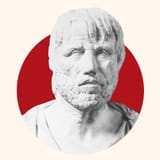Roman Innovations in Medicine: Genius Discoveries and Dangerous Missteps
Roman medicine blended Greek principles with bold experimentation, balancing progress and peril. From aqueducts and sanitation to risky cures and surgical advances, their legacy shows both the brilliance and the dangers of ancient healing.

Medicine in the Roman Empire was a complex mix of practical observation, cultural tradition, and experimentation. Roman physicians borrowed heavily from the Greeks’ Hippocratic principles.
The Hippocratic principle of either to help or at least do no harm continues to be the foundational ethos of the patient-physician relationship. According to a ScienceDirect study, it encapsulates the principles of “beneficence” and “non-maleficence.” The idea is to remind doctors that they should act to benefit patients and not to harm them.
However, they blended Hippocratic principles with their own understanding of anatomy and public health. They were quick to apply what worked, whether it came from herbal remedies, surgical techniques, or simple sanitation practices.
At the same time, their eagerness to experiment sometimes led them into dangerous territory, where cures could cause more harm than the illness itself. This article discusses Roman innovations in medicine.
The Drive for Healing and Experimentation
Roman doctors often had to treat soldiers, gladiators, and citizens exposed to harsh living conditions. This urgency pushed them to refine surgical instruments, perform amputations, and even develop early forms of cataract surgery.
For their time, these achievements were impressive, showing that Roman medicine was not entirely stagnant but was willing to push boundaries. Yet, those same boundaries sometimes blurred the line between medical advancement and reckless trials.
The historical record makes clear that even respected physicians were capable of serious errors. Consider the example of Galen, one of the most influential doctors of antiquity. According to Britannica, dissecting human corpses was a taboo during his time. Therefore, many of his theories are based on animal dissections. This led him to make several errors, which were recognized later.
The Romans lacked the benefit of modern scientific testing. However, it was not solely because of the lack of scientific testing and advancements. Consider the Depo Provera injections, which are an effective contraceptive. However, as TorHoerman Law notes, they are linked to increased risk for brain tumors.
This led to Depo shot linked to brain tumors legal action, which is a reminder that even with advanced research, some treatments go wrong. Much like Roman society, today’s medical field walks a delicate line between innovation and accountability.
How did Roman citizens view experimental treatments from their doctors?
Most Roman patients accepted risky treatments because the alternative was often suffering or death. Medicine was seen as a hopeful, if uncertain, solution, and physicians carried authority. However, wealthy families sometimes distrusted overly experimental doctors, preferring traditional remedies or Greek-trained physicians with established reputations.
The Role of Public Health
One of the Romans’ greatest contributions to medicine lay not in individual cures but in public health measures.
According to National Geographic, the Romans built aqueducts for transporting fresh water to populated areas. Although they were also a part of the early civilizations of Egypt and India, the Romans improved the structure of aqueducts. They were built over a period of 500 years, ranging from 312 B.C.E. to C.E. 226.
The Romans also built sewers to reduce waste and public baths to offer opportunities for hygiene. These innovations did more to prevent disease than many of the remedies physicians prescribed.
However, even here contradictions existed. While public baths promoted cleanliness, overcrowding also spread infections, and water channels could carry pollutants as well as fresh water.
The emphasis on sanitation reveals a Roman awareness of environmental health, even if they lacked an understanding of germs. They noticed that cleaner living spaces often meant fewer outbreaks of illness, and this observational approach shaped policy decisions.
Yet, the reliance on lead pipes in their aqueduct systems created hidden dangers, exposing many to slow poisoning. Their greatest success in public health was thus shadowed by an unseen hazard. In fact, The Guardian mentions a study about the use of lead in the Roman Empire. It states that their use of lead reduced IQ levels across Europe.
How did the Romans handle outbreaks of disease in crowded cities?
When plagues struck, Romans attempted a mix of religious rituals and practical measures. Temples might host purification ceremonies, while city officials ordered the cleaning of streets and water supplies. Though lacking modern science, these steps sometimes slowed contagion, showing how civic response worked alongside spiritual practices.
Dangerous Missteps and Questionable Cures
Alongside their successes, Roman physicians experimented with treatments that now appear reckless. Mercury, lead-based concoctions, and opium were used in doses that could easily become poisonous.
Consider the example of black henbane used by physicians of ancient Rome. According to a Science.org article, it was a source of both fascination and fear for them. It was used as a narcotic, which helped relieve pain and discomfort. However, ingesting an inappropriate amount of it could lead to severe consequences.
Some surgeries, performed without adequate sanitation, resulted in death rather than recovery. The tension between progress and misjudgment shaped Roman medicine in ways that still resonate.
Even the use of charms and amulets shows the thin line between science and superstition. A soldier might carry a protective stone to ward off fever while also being treated with herbal brews.
These overlapping methods reflected both the desperation of the patient and the limited tools available to the physician. In practice, a Roman could never be sure whether a cure was a genuine solution or a dangerous experiment disguised as treatment.
Were poisons ever used deliberately as medicine in Rome?
Yes, substances we consider poisons today were often prescribed in controlled doses. For instance, hellebore and mercury were used in attempts to treat various conditions. The danger lay in the difficulty of controlling dosage, since a slight excess could turn a supposed cure into a fatal mistake.
The Roman Empire’s medical legacy is one of both brilliance and error. Their infrastructure laid the foundations for modern public health, while their physicians demonstrated that the pursuit of healing often requires boldness. Yet, their failures remind us that even the best-intentioned innovations carry risks.

About the Roman Empire Times
See all the latest news for the Roman Empire, ancient Roman historical facts, anecdotes from Roman Times and stories from the Empire at romanempiretimes.com. Contact our newsroom to report an update or send your story, photos and videos. Follow RET on Google News, Flipboard and subscribe here to our daily email.
Follow the Roman Empire Times on social media: